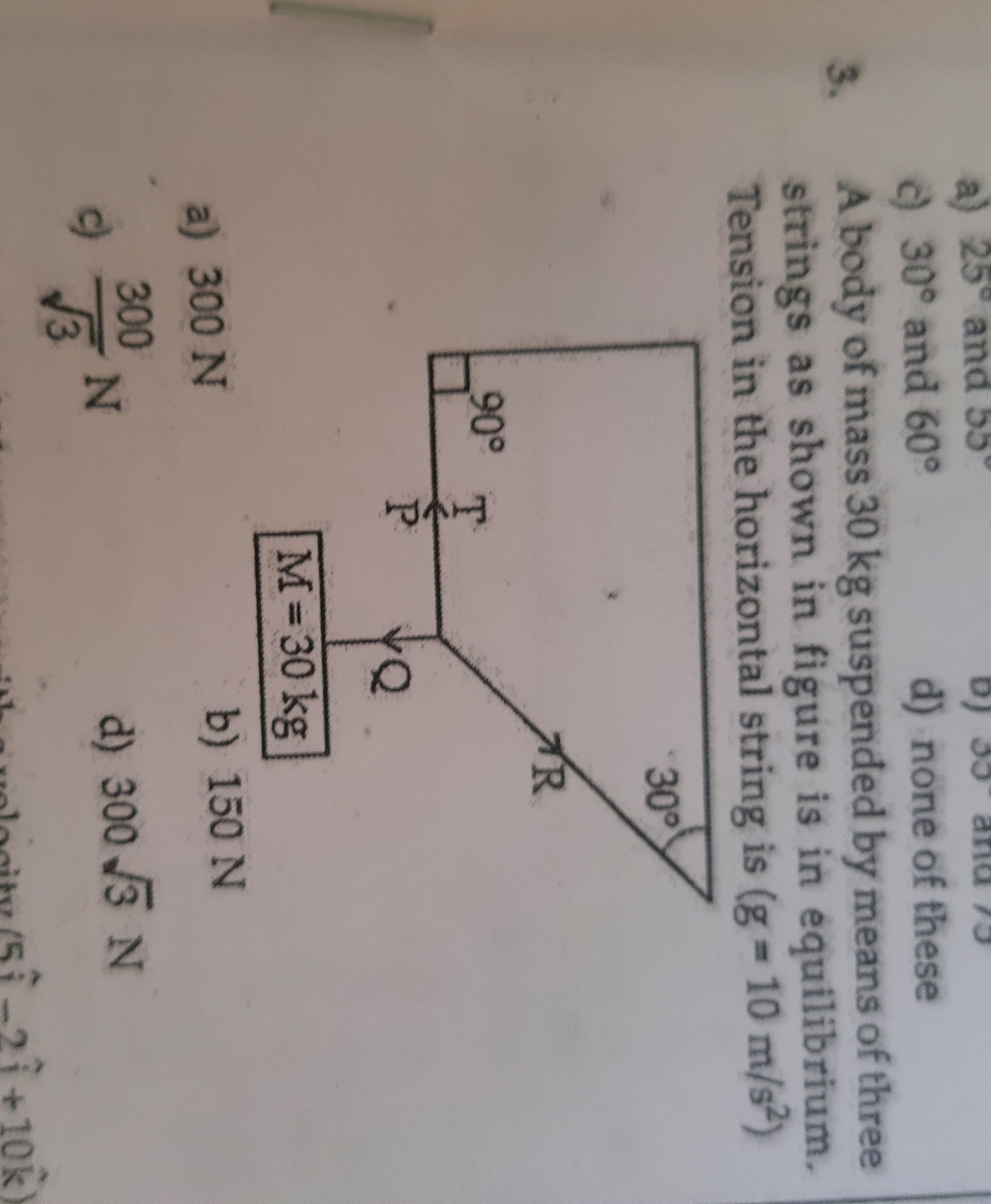Question
Question: A body of mass 30 kg suspended by means of three strings as shown in figure is in equilibrium. Tensi...
A body of mass 30 kg suspended by means of three strings as shown in figure is in equilibrium. Tension in the horizontal string is (g = 10 m/s²)

300 N
150 N
3300 N
3003 N
3003 N
Solution
We first note that at the point of suspension the three tensions are in equilibrium. In the diagram the vertical string (supporting the 30‐kg mass) provides the upward tension equal to the weight
W=mg=30×10=300N.
At the junction (point Q) the other two strings are:
- A horizontal string with tension Th (unknown), and
- A string making 30° with the horizontal; call its tension Ti.
Since the strings are at right angles (the horizontal and the inclined string make a 90° angle) the vector sum of Th and Ti must equal the vertical tension needed to balance the weight.
Resolving the inclined tension Ti gives:
Horizontal component = Ticos30 Vertical component = Tisin30
For equilibrium the horizontal components must cancel:
Th=Ticos30.
Also the entire vertical force is provided solely by the inclined string:
Tisin30=300⟹Ti=sin30300=1/2300=600N.
Thus the tension in the horizontal string is
Th=600cos30=600×23=3003N.
